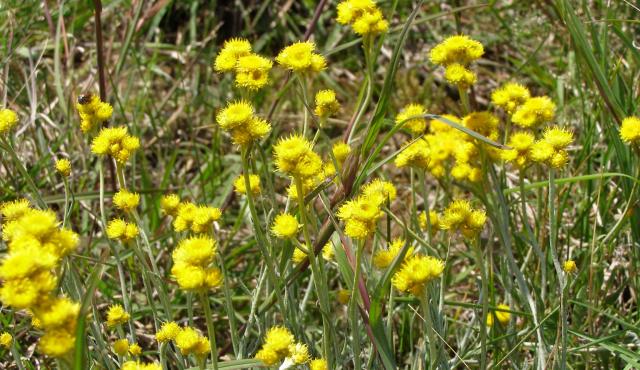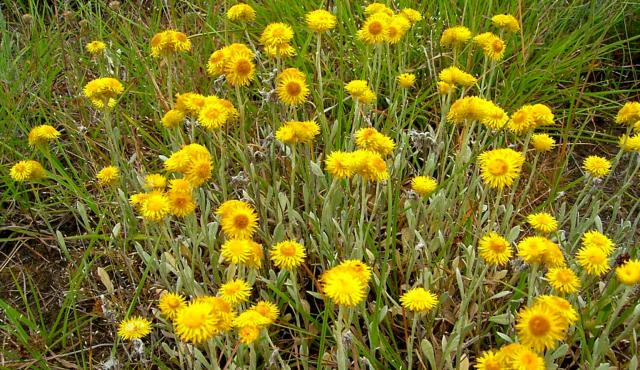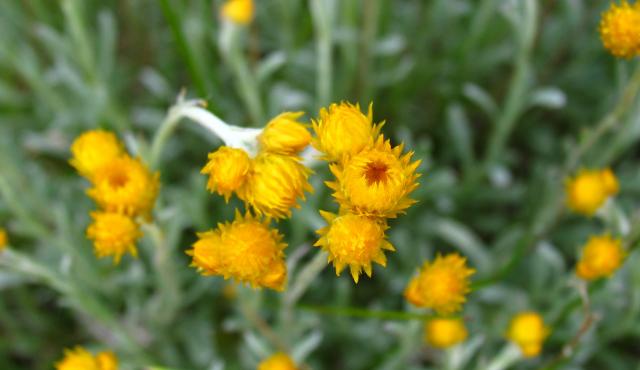


Common Everlasting
Chrysocephalum apiculatum
Attractive herb varying considerably from a sparse erect plant up to 60 cm high with narrow leaves to much lower sprawling plants with fleshy leaves 1 cm wide. Silver-grey to grey-green stems and leaves covered in cottony white hairs. Golden-yellow button flowers in dense clusters on tips of stems in compact heads to 2.5 cm wide.
| Details | |
|---|---|
| Flora Type | Herbs |
| Former Scientific Name | Helichrysum apiculatum |
| Other Common Names | Yellow Buttons |
| Distinctive Features | Cottony cobwebbed stems and cottony hairs on both surfaces of the leaves. |
| Biology | Perennial. Widespread on a range of well-drained soil types in diverse habitats including woodlands, heathlands and grasslands. May spread by rhizomes to form large colourful patches. Fluffy daisy seeds dispersed by wind. |
| Native Status | Native |
| Flowering Time | Sep-Dec |
| Taxonomy | |
|---|---|
| Phylum | Tracheophyta (Vascular Plants) |
| Class | Magnoliopsida (Flowering Plants) |
| Order | Asterales |
| Family | Asteraceae |
| Genus | Chrysocephalum |
| Species | apiculatum |
It is important to use sources from populations with similar forms when carrying out local restoration because of variation in form. Flowers are a nectar source for butterflies. Helichrysum are now recognised as African and Eurasian plants and Australian members have been reclassified into a number of groups including Chrysocephalum.
| Interesting Facts | |
|---|---|
| Similar Species | The great variation in form and structure suggests may be several species within the Chrysocephalum apiculatum complex. Intergrades with Chrysocephalum semipapposum and intermediate forms can be difficult to assign to one or other species |
| Native Status | Native |